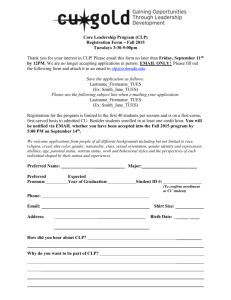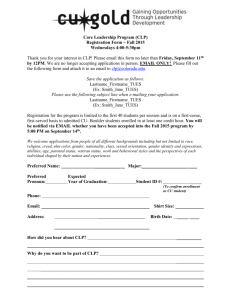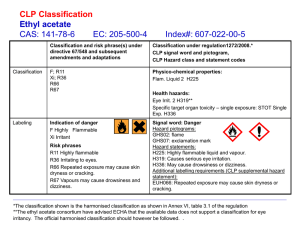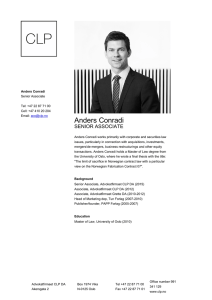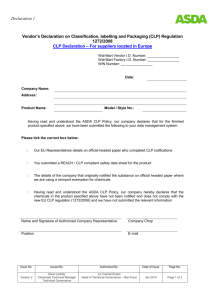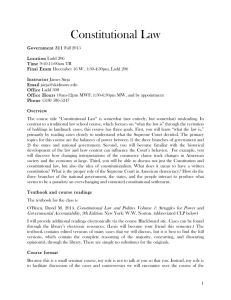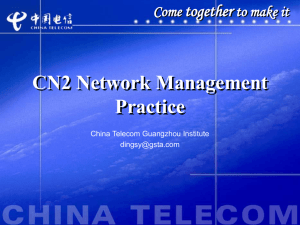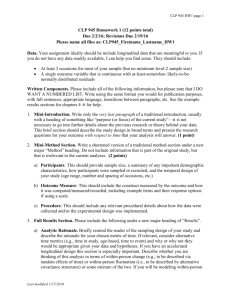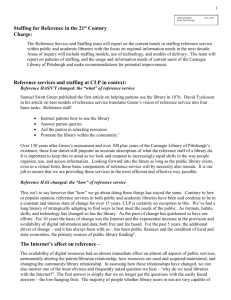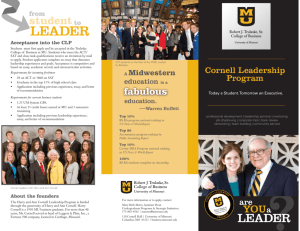21st Century Reference Services Summary 7-10
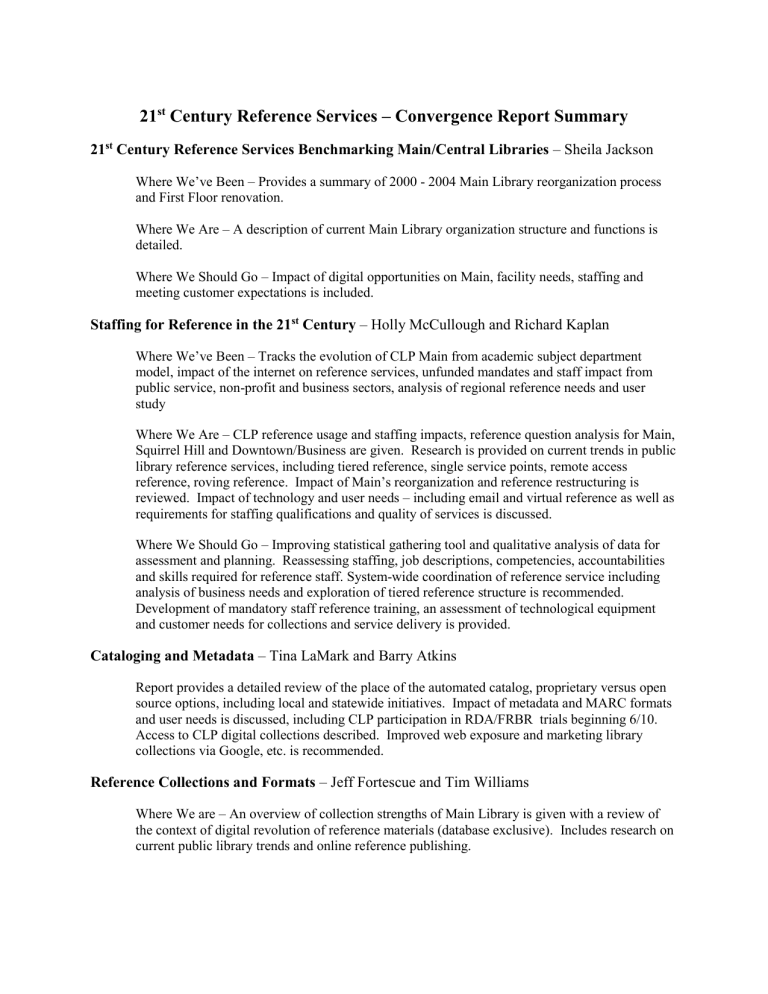
21
st
Century Reference Services – Convergence Report Summary
21 st Century Reference Services Benchmarking Main/Central Libraries – Sheila Jackson
Where We’ve Been – Provides a summary of 2000 - 2004 Main Library reorganization process and First Floor renovation.
Where We Are – A description of current Main Library organization structure and functions is detailed.
Where We Should Go – Impact of digital opportunities on Main, facility needs, staffing and meeting customer expectations is included.
Staffing for Reference in the 21 st Century – Holly McCullough and Richard Kaplan
Where We’ve Been – Tracks the evolution of CLP Main from academic subject department model, impact of the internet on reference services, unfunded mandates and staff impact from public service, non-profit and business sectors, analysis of regional reference needs and user study
Where We Are – CLP reference usage and staffing impacts, reference question analysis for Main,
Squirrel Hill and Downtown/Business are given. Research is provided on current trends in public library reference services, including tiered reference, single service points, remote access reference, roving reference. Impact of Main’s reorganization and reference restructuring is reviewed. Impact of technology and user needs – including email and virtual reference as well as requirements for staffing qualifications and quality of services is discussed.
Where We Should Go – Improving statistical gathering tool and qualitative analysis of data for assessment and planning. Reassessing staffing, job descriptions, competencies, accountabilities and skills required for reference staff. System-wide coordination of reference service including analysis of business needs and exploration of tiered reference structure is recommended.
Development of mandatory staff reference training, an assessment of technological equipment and customer needs for collections and service delivery is provided.
Cataloging and Metadata – Tina LaMark and Barry Atkins
Report provides a detailed review of the place of the automated catalog, proprietary versus open source options, including local and statewide initiatives. Impact of metadata and MARC formats and user needs is discussed, including CLP participation in RDA/FRBR trials beginning 6/10.
Access to CLP digital collections described. Improved web exposure and marketing library collections via Google, etc. is recommended.
Reference Collections and Formats – Jeff Fortescue and Tim Williams
Where We are – An overview of collection strengths of Main Library is given with a review of the context of digital revolution of reference materials (database exclusive). Includes research on current public library trends and online reference publishing.
Where We Should Go - Detailed recommendations for changes to collection development policy for e-reference sources and e-journals, special collections and digitizing special collections and ereading devices.
Web 2.0 and the Digital Future – Holly Anderton and Ryan Hughes
Where We Are – CLP use of social media for reference services and marketing, including virtual reference, Facebook, MySpace, WordPress, YouTube, Flickr, etc. is detailed. Research reviews practices of other public libraries, social networking trends and customer demands. Staff use of social networking resources is documented.
Where We Should Go – Recommendations for optimal and minimal funding scenarios are provided including Google Books script in OPAC, user generated content, CLP blogs, and social media accounts. High end options include Skype/chat reference sessions, expanded instructional online videos on using the library, dedicated social media staff and expanded social media training for the public.
The User-Centered Library and Services – Karen Rossi, Audrey Iacone and Bonnie
McCloskey
What is the Library of the Future? – Where are we now and what will people want? The Library as Place - Where does CLP stand in this user-centered model – general and special services for children and teen, provided, signage, staffing, library as a destination for all ages, specialized programming and promotion of reading. Core services, specialized services, and facility-based efficiencies are detailed at CLP and national trends are identified.
CLP’s role for the Main Library vis-à-vis CLP branches and Allegheny County district libraries, and as designated statewide resource center are defined. What do we currently do and ideas for where should we go and improve are given.
The image of libraries in general is discussed with emphasis on CLP in particular. Options are provided on marketing library services so that current and future customers will value the library in the community.
